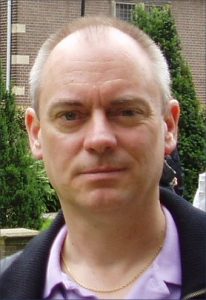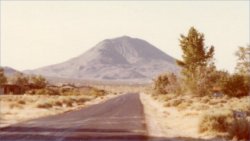(Four Walls Eight Windows, October 1993, 299pp)
In June I focused on reading classic science fiction novels, partly to see how many I could get through in one month, considering other obligations (answer: 6 and a bit), and partly to revisit two novels that have, in the past couple three years, become semi-permanent residents on extended bestseller lists, just as Orwell’s NINETEEN EIGHT-FOUR and Bradbury’s FAHRENHEIT 451 have been for decades.
The first of these is Octavia Butler’s PARABLE OF THE SOWER, from 1993. I read it shortly after it came out (that’s the first edition shown above), and thought it a perfectly decent novel, if not especially outstanding. There have been plenty of other near-future novels about the collapse of society, the survivors having to fend off criminals and live off the land. What made it distinctive, perhaps, is that it was apparently set in Altadena CA, where the author lived at the time, and involved a female black main character. (And that the author was a female black author.)
What brought it recently to prominence, I suspect, is two things. First, the author herself has gained posthumous fame beyond her fame while she was alive. In this way she’s like Philip K. Dick; both had fine careers while they were alive, but were known only within the SF community. Second, this particular book is set in 2024, and features a right-wing presidential candidate, then president, named Donner, whose plans include ending wasteful government programs (for the Moon and Mars) by privatizing them, and suspending all sorts of laws to get people back to work. He doesn’t literally say that he’ll “make America great again,” but the flavor is there.
As the book opens society is collapsing in various ways, and Robledo, the town where the protagonist, Lauren Olamina, lives, consists of walled-up neighborhoods with only perfunctory law enforcement. (The book is confined to Lauren’s point of view, so we only know what she knows, mostly first-hand.)
The plot of the book consists of Lauren having to flee Robledo as family members are killed and neighborhoods burn. Walking, she heads west along the 118 freeway to route 101 and then north, collecting various fellow travelers along the way. Oddly, big trucks are still on the highways, but not cars given the price of gas, while the centers of towns they pass seem oblivious to the refugees heading north. The one science-fictional element is that some kind of drug, nicknamed pyro, that makes people want to set fires, is behind a lot of this mayhem.
In parallel, Lauren, having become skeptical, even cynical, about the traditional religion of her family and neighbors, develops a philosophy of her own, which she calls “Earthseed,” whose core idea is change. From the first page of the first chapter:
All that you touch
You Change.
All that you Change
Changes you.
The only lasting truth
Is Change.
God
Is Change.
There are many more passages from “Earthseed: The Books of the Living” throughout. When I first read the book I noted that this philosophy yielded “a few pretty lines of poetry, but is only about as deep as a puddle on the sidewalk.” Actually, I saw more to it this time, as Lauren writes about intelligence as an adaptability, how stability disintegrates, about power struggles, how Earthseed is life that perceives itself changing, about embracing diversity. Eventually it becomes clear that the purpose of Earthseed is to spread humanity to other planets, for Earthlife to take root in new ground.
There was a second book, PARABLE OF THE TALENTS (1998), which I haven’t read even once. (My copy is signed, and personalized!) And according to Wikipedia, Butler planned several more PARABLE novels, apparently planning a series about humanity settling other planets. But she died in 2006 and didn’t finish even the third volume.
\
The book ends with Lauren and her band settling a remote peninsula near Mendocino, and naming their community Acorn. The final page quotes the “parable of the sower” from the King James Bible, Luke 8: 5-8.
The second book is set in the community they build there.
\
So this is a fine novel, though not much different thematically than many other sf works as far back as the 1950s. At the risk of sounding somehow sexist, Butler was not a “lady writer”; she writes scenes of danger and violence as well as anyone. Also, she’s great at writing tense scenes between characters in which we don’t always immediately perceive the source of their antagonism. But has us draw conclusions.
\
Geographical notes. I think readers have assumed the book is set in Altadena, because that’s where Butler lived at the time. (Indeed, another reason the book gained recent attention is that the fires in Altadena and elsewhere in SoCal this past January were seen as “fulfilling” the “prophecies” of this book.) Yet, if Butler had that setting in mind, she changes all the names. Streets mentioned in the text don’t exist in Altadena. Though the proximity to the nearby mountains matches.
Then there’s the matter of when Lauren sets off on foot to head north, they walk “down” [south?] to the 118 and turn west. Well, the 118 freeway currently ends in the San Fernando Valley, some miles to the west of Altadena. OK, the original State Route 118 originally ran on surface streets as far east as Pasadena. But it wasn’t a freeway then.
So the locations in the book are some kind of collage of real places. Not to be taken as a literal depiction of Altadena.






